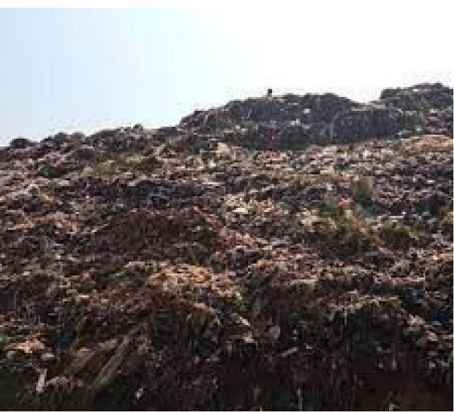Kiteezi landfill is one of the areas under study. Researchers found that while they have leachate treatment plant, garbage is often not treated
Scientists have asked authorities to ensure municipal garbage dumped at landfills is first treated having found heavy metal concentrations in milk from cows grazed along dumpsites.
Researchers based at the Makerere University School of Public Health (MakSPH) have said that they found the presence of heavy metals in plants such as vegetables that are grown near the Kiteezi landfill, Entebbe and Mukono dumpsites where they collected samples.
In this study that was conducted for a period of six months, the research team collected 14 milk samples from lactating cows in nearby households where participants were requested that scientists pick the samples early in the morning. They also collected 37 leachate samples in addition to 42 crop samples grown around dumpsites.
The samples were digested and the heavy metals concentrations were determined by using a method called Atomic Absorption Spectroscopy (AAS) in the laboratory housed at Makerere University Department of Food Science.
Abdullah Ali Halage, a researcher based at the Department of Disease Control and Environmental Health says the highest concentration of the metal that exceeded acceptable limits were found in milk with zinc, nickel and iron being the commonest. When it comes to leachate, food crops and vegetables, they found iron to be the highest followed by manganese.
While these chemicals may be needed by the body, experts say that the levels found in the items were way higher than the World Health Organisation recommends. Halage, who was also the Principal Investigator on the study says that some metals like lead and cadmium are toxic and could cause dangerous effects to the consumer including the risk of cancer.
Commenting on the findings of the study, Dr John Ssempebwa another expert based at the Department of Environmental Health said this evidence shows authorities why activities in the buffer zones within dumpsites have to be restricted to only those that don’t put people at risk.
Unfortunately, he says because it’s generally believed that municipal garbage can be a good source of manure,m communities tend to plant food crops around them, some of which end in the markets endangering a lot of people.
However, when these findings were put to Samuel Joga, the Officer in charge of Health Inspection and Education at Kampala City Council Authority (KCCA) that is also in charge of the country’s biggest dumpsite at Kiteezi, he acknowledged that they never pay attention to heavy metal when treating their leachate which often overflows to the neighbouring households.
Meanwhile, there are plans to shift the landfill from Kiteezi to Mukono but still, experts say it will take longer for the area to be safe as some of the hazardous materials take time to be completely gotten rid of. Joga says KCCA has a plan for this post-relocation which involves protective measures that include restricting access to the site for some time after covering the garbage.
Generally apart from constant monitoring and treating garbage, as a short term measure, researchers say the Ministry of Health and the District Health teams should sensitize the public about the possible dangers of consuming milk and crops grown around the dumpsites.
-URN





